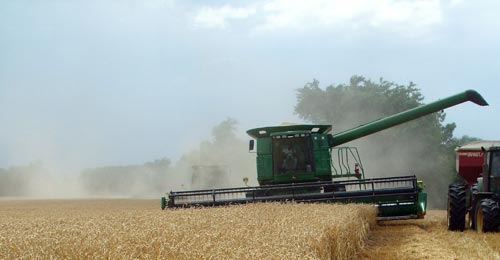April 26, 2011

The consequences of several weeks of major storms are hitting Mid-South agriculture.
On Monday, Stephen Harrison, LSU AgCenter small grains breeder, released a letter addressing wheat harvest, dessicants and moisture levels. The letter reads:
“I received a call this morning inquiring about the use of dessicants to force early dry down of wheat. The concern is the possible loss of wheat fields due to very high projected Mississippi River levels in mid to late May.
“I don’t have much experience with wheat dry-down so a lot of this is speculation on my part. I did a little reading and am attaching a few papers. Wheat is physiologically mature when it approaches 30 to 35 percent moisture. I have always used the guideline that a wheat seed is mature when the crease is the only part of the seed that is still green. Wheat can be harvested when moisture reaches 20 percent but should be dried to about 13 to 14 percent for storage.
“Rick Mascagni (LSU AgCenter agronomist) did some work a few years ago with wheat dry-down rates. He found that wheat dries down at rates of 2 to 3 percent per day under conditions like those we are currently experiencing (hot, dry, and windy). So a 30 percent moisture wheat would reach 20 percent moisture in less than a week.”
Harrison provided the following links to related research:
“The question then becomes whether or not a desiccant would help as an aid to achieve early harvest. I suspect that given the dry-down rates of wheat in our environment that the use of a chemical is not necessary and probably would make little difference in harvest date. I also don’t know how well a dessicant would work on wheat that is already starting to turn. We are headed for a very early harvest this year due to weather patterns.
“I do recommend that growers harvest as soon as wheat reaches an acceptable moisture level (or 18 to 20 percent if drying). Wheat loses test weight at a rate of about one pound per bushel per heavy rainfall event after it reaches maturity. This is due to expansion and shrinking to a non-uniform shape once the grain has matured.
“We have an excellent crop in the field right now. Some wheat is drought-stressed, but wheat tolerates drought better than most crops. Our best yields are usually in dry springs.
“Good luck with harvest!”
You May Also Like




